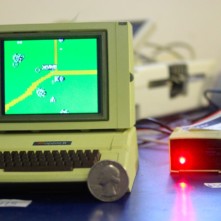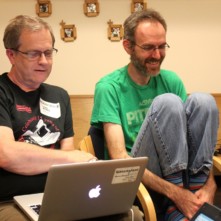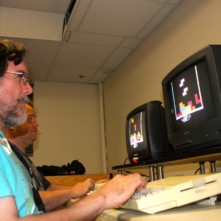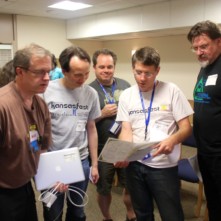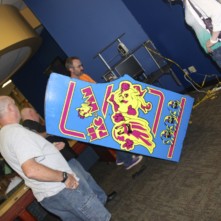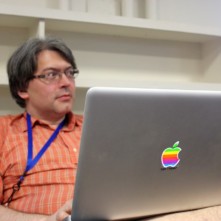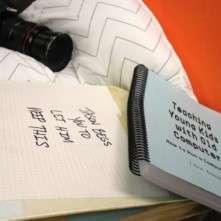Apple Games Done Quick
| July 27th, 2015 8:41 AM by Ken Gagne | Filed under Game trail, Happenings; Comments Off on Apple Games Done Quick |
This month at KansasFest, I gave attendees a crash course in two genres of YouTube gaming videos: unboxings and Let’s Plays. There’s yet another genre that I have no participatory experience with but am nonetheless in awe of: speedruns.
A speedrun is an attempt to finish a game as quickly as possible without using any external cheats — by which I mean emulation, ROM hacking, Game Genies, or other devices. What is allowed are exploitation and manipulation of glitches (intentional or otherwise) within the game. This approach can allow the Super Nintendo game Super Mario World to be finished in under five minutes — even though the programmers never intended it, they nonetheless laid the groundwork for their game to be abused in this fashion.
Speedruns are extraordinary for the players’ intimate knowledge of the game. They’ve memorized minutia and can predict likely outcomes, demonstrating a depth of mastery that few casual or even hardcore gamers can ever hope to achieve. Unlike unboxings or Let’s Plays, which are done for fun or profit, speedruns are highly competitive, even if the player is challenging only himself to shave a second or two of world record.
When it comes to organization Games Done Quick, that competitive force is used for good. Their twice-annual events — Awesome Games Done Quick and Summer Games Done Quick — are video game marathons that raise money for charity. Players — as many as 150 — congregate in a single location and stream their speedrun trials, encouraging viewers to donate to various non-profits. For SGDQ15, which began yesterday in St. Paul, Minnesota, and runs through August 1, the charity is Doctors Without Borders.
That’s all well and good — but where’s the Apple II connection? The answer to that question comes at 6:45 AM CDT this Thursday, July 30, on the speedrun schedule. At that wee hour, under the subcategory of "Silly Games Done Quick", runners will be playing Oregon Trail. Confirmed Facebook user Cat Morgan: "Yes, they are hoping to do it on an Apple — they are waiting for the hardware to arrive to test it with their streaming rig." Their intended completion time is a mere 15 minutes — which should be feasible, given that a tool-assisted speedrun uploaded to YouTube just this month shows the game being completed in 8:24.63:
The hardware and software demonstrated in my Let’s Play tutorial opens the door for many more Apple II speedruns. Maybe you’ll be the next gamer whose retrocomputing will help Games Done Quick raise money for a good cause!
UPDATE (Aug 1, 2015): A YouTube record of the #SGDQ15 speedrun of Oregon Trail is now online:



